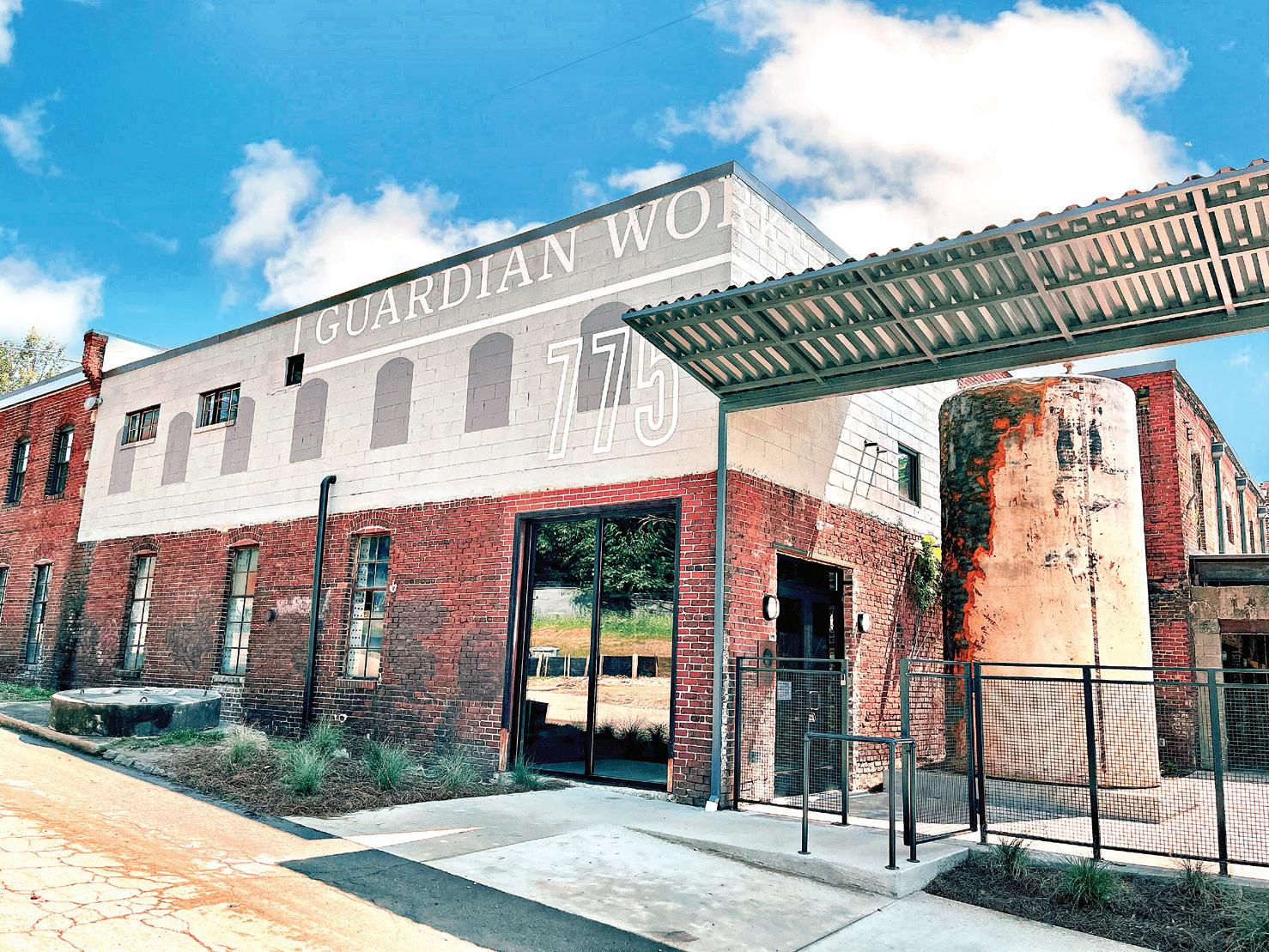A Stitch In Time
Artist Marquetta Johnson shares legacy of quilting with new generation By Isadora Pennington “It’s kind of like jazz,” explains Marquetta Johnson as she gestures at the quilts on display in her studio. She describes her work as simultaneously improvisational and steeped in legacy and tradition. Johnson shared an example: the great jazz pianist and composer Thelonious Monk said that to create improvisational music he had to work hard at it. Similarly, Johnson knows how to make quilts and what typically goes together, which allows her to create with the freedom of inspiration. “When you know the basics of what works together, you’re like an alchemist, you can kind of just put it together. I would say the same thing about a quilter.” Surrounded by finished pieces, materials, and tools, Johnson speaks about her journey as a teaching artist and professional quilter from her small home workspace. A soft light filters in from the window and patio door, illuminating the cozy space. The smell of incense lingers in the air and birds chirp cheerfully at the feeders just outside. Stacks of in-progress pieces are positioned throughout the room and finished quilts hang on the walls. An old iron sizzles idly atop a table. Her workstations, set up to accommodate her wheelchair, are peppered with handwritten notes that outline her current projects and to-do lists. When I arrived, she was sewing a tree trunk, and she spoke to me as the sewing machine gently whirred in her hands. Johnson has been working with textiles since she was young. As a girl she had a boundless energy that sometimes got her in trouble. Calling it “a kind of mercurial energy,” it wasn’t until later that she discovered the value in her compulsion to move and create. She struggled with selfregulation. One particularly attentive teacher saw something in her and taught her how to crochet, which set her on a path of creativity and helped her to channel her energy into learning and art. “Crocheting is like mindfulness training that can help you learn how to be still,” says Johnson. “That’s the first step in learning how to be quiet.” Creativity is not out of the ordinary for the women in Johnson’s family. Her great-grandmother was a seamstress and a quilter who was so skilled she could create entire outfits based on pictures from Sears catalogues. Her grandmother also had these same skills but was more of a folk artist, working as a painter in a figurine factory in Chicago before relocating to New York and later returning to Atlanta in the 1970s and again taking up quilting. “That just let me know that even with the circumstances of life for African Americans in the ‘30s and ‘40s, she was still able to find joy through creativity,” Johnson recalls. Her mother was taught how to quilt and sew, but she had been part of a generation that was enamored with city living and At l a n t a I n t o w n Pa p e r. c o m
desired store-bought items as opposed to handmade. And so, it was ultimately her grandmother who set out to teach her all the traditional tools and methods for quilting. Today, Johnson is building upon those skills and seeks to bring a legacy of skills from the 20th century into the 21st century. She incorporates traditional methods like lap sewing into her practice, mixing the old with the new, and adding elements that she feels broaden the appeal of her artwork to a larger audience. “What I’m trying to do is figure out a blend of things that creates a style that is contemplative,” Johnson says. “That’s where I’m trying to go with it. I’m not trying to provide you with a memory or something that’s familiar; I want you to have an opportunity to have that visual experience that is simply led by the elements of art.” Beyond the visual joy that comes from gazing upon one of Johnson’s pieces, she has also been drawn to becoming a “multi-sensory artist” as she calls it. During a stint teaching at the Center for the Visually Impaired, she started thinking about how people with visual impairments could enjoy and appreciate her work. “I began to wonder what’s beautiful for someone who can’t see? It made me start looking at my work in a whole new way.” As a result, she has begun incorporating baubles and beads into her pieces. She started making the stitches big enough to feel, and causing the fabric to bunch up, which allows people with low or no vision as well as those living with developmental disabilities to be able to appreciate her works through touch instead of only through sight. “Incorporating that into my work makes me feel that I am serving a wider audience.” Johnson has also been a teaching artist for more than 20 years. Whether she is leading classrooms in schools, civic organizations, community centers, the High Museum of Art, or most recently a foray into Zoom lessons, she can use her knowledge of the fundamentals of art and her passion as an artist to inspire and challenge children to
Marquetta Johnson (Photos by Isadora Pennington)
pursue art. By operating both inside the classroom and in her studio, she is able to lend unique insight to the young people she teaches and be a part of a multi-generational chain of creatives. On her walls alongside her quilts are a number of works by her late son, a treasured portfolio of his work just waiting to be seen by the world. Johnson hopes that by pursuing her own creative career she can also use it to showcase the works of her family members as well. “What I want to try to do is to build this legacy with my artwork with the hopes that I can include my grandmother, my sister, and my son, and have people see our family’s legacy of creativity. And see that it’s important. It is important what we pass down to our children. It’s important.” On any given day you can find Johnson quietly working in her home studio, dyeing and painting custom fabrics, cutting, piecing, and sewing her quilts. But she is just as devoted to her work as an educator.
Reminiscing about the beauty of working at the High Museum of Art and seeing great artworks in person, she explained just how moved she feels in their presence. That enthusiasm for art is contagious, as is her joyous approach to creation. Johnson says that while she would always appreciate more studio representation, what she truly desires is to be a link in the chain connecting creatives from the past to the future. “What I want to do is encourage young people to take up needles, to take up thread, and change the world with it.” July 2021 | INTOWN
39




















